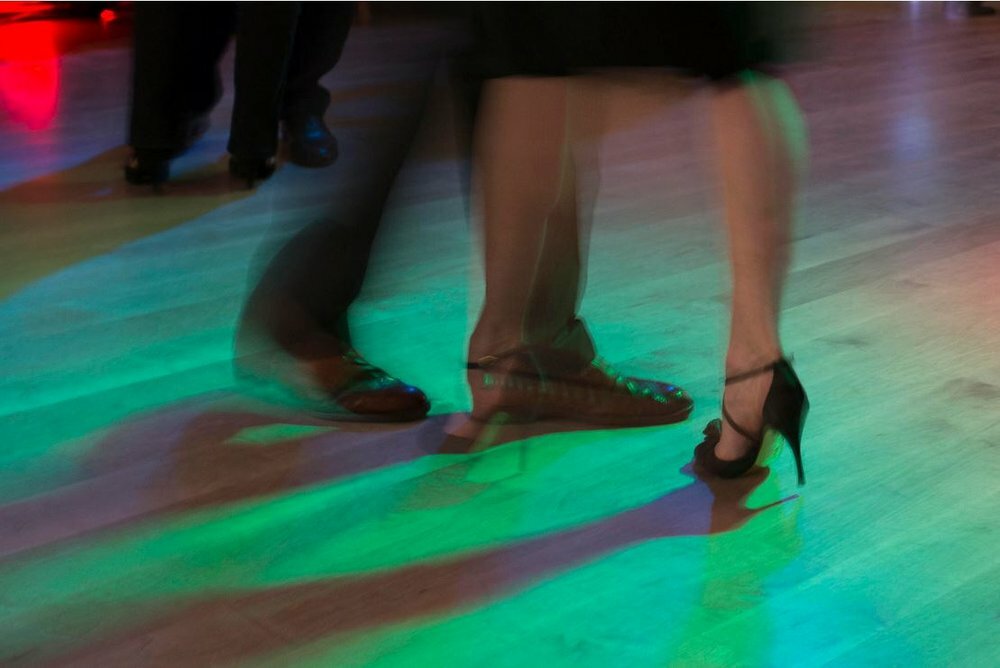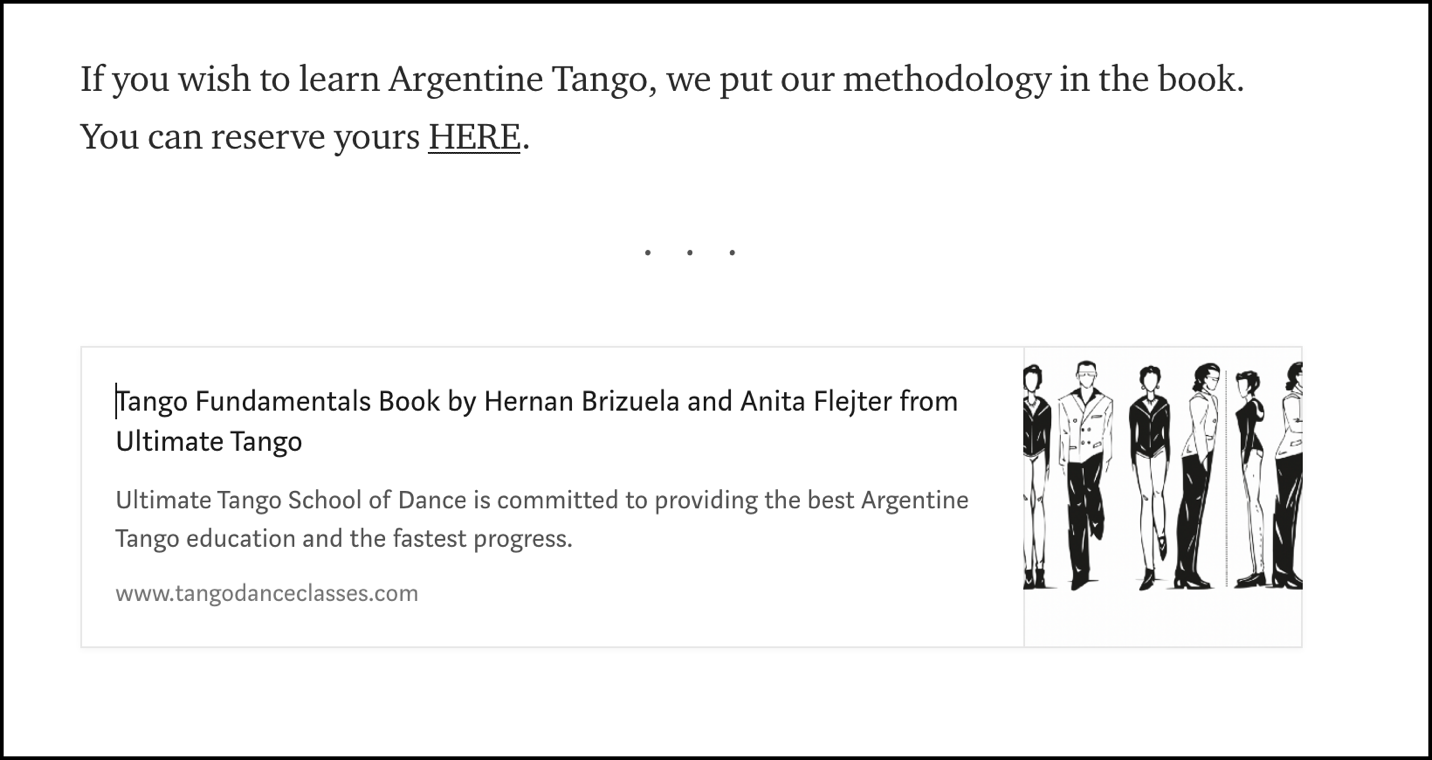In many partner dances, the femininity and masculinity of dancers are often emphasized. The leader role is typically taken on by the man, and the follower role is taken on by the woman.
In many respects, this reflects society’s traditional outlook of how men and women must act not only according to these supposedly delegated roles but also how they must also view themselves within the context of these socially acceptable norms. Men as leaders must be more assertive, while women are expected to be more submissive. The power dynamics of giving and receiving tend to be monopolized by one gender, thus reinforcing stereotypical perspectives.

Fundamentally speaking, this is not the case for Argentine tango.
While it also has leaders and followers, tango is more about the shared connection between partners, which is not solely based on their supposed femininity and masculinity. However, this is up for debate in the sense that gender may contribute to a dancer’s priorities.
For example, a man may be more concerned about musicality and navigation, while a woman may be more inclined to focus on the emotionality of the dance, as explained by a post from tangomentor.com.
On the whole, however, Argentine tango does not highlight gender as much as its foundations highlight the importance of partner connection, which transcends gender stereotypes and revolves around the physical, emotional, and even spiritual connection between both dancers.
Furthermore, while it may often be the case that the man leads, it is not unusual to see women leaders, thus proving that roles can be perfectly interchangeable between partners without affecting the dance or their shared experience.
In fact, even the steps that make up Argentine tango reflect the interchangeable nature of the roles themselves, as both leaders and followers may execute counter-positions or steps that are performed by one role but have an equivalent for the other. This is best exemplified by the arrastre and the barrida.

Arrastre vs. Barrida
More often than not, the arrastre and the barrida are used interchangeably and without much distinction from one another. Though their meanings may technically be distinct — arrastre means to drag and barrida means to sweep — the way in which both steps are executed look similar, thus perpetuating the notion that they are, indeed, the same in most respects and are only distinguished by very slight terminological differences.
But why then are two different words used to describe or denote what appears to be a single action?
To further understand the arrastre and the barrida, one must view both terms within the context of who executes them and how.
In the case of the barrida, jenibreentangoacademy.com describes it as,
“Most commonly initiated by the leader, a Barrida is executed by capturing his partner's foot with his and using that connection to sweep her foot along the floor. In certain situations, the follower can sweep her partner's foot as well.”
Further to the barrida, a post from pks.mpg.de describes it as
“the act of sandwiching one of your partner's feet between your feet” as the word itself literally means “bite.”
On the other hand, a post from argentinetangosoutheast.co.uk offers an interesting take on the barrida:
“A tango illusion, which looks as if the leader 'sweeps' the foot of the follower's free leg, with the foot of his free leg — or vice versa. However, the barrida is actually a lead from the chest, inviting the follower to take a step; the barrida action is a 'fake' which accompanies her natural movement as she moves her axis from one spot to the next. This is how the leader can lead the follower to barrida him!”
The same post offers a description of the arrastre:
“Arrastre means 'drag'. Here the leader literally drags or pushes the foot of the follower's free leg to another position, whilst her axis (body weight) remains in the same place. This is different from but related to the barrida.”
As one of the popular leader’s steps in Argentine tango, the barrida is often the one being referenced. It is always tied to the arrastre but only when it comes to how these terms bear similar meanings. Most teachers or tutorials found online teach either the barrida or arrastre, though they rarely make a clear distinction between the two.
So what’s the difference?
In the case of Argentine tango, since leader and follower roles are interchangeable, the difference between the arrastre and the barrida may be attributed to the subtle power dynamics exercised in the dance.
For the barrida, the sweeping movement is outwardly proposed by the leader, which may be reciprocated by the follower. But for the arrastre, it may seem as though it is the follower who sweeps the leader, but in reality, the follower allows the leader to drag the follower’s foot.
In simple terms, both steps are an exercise in cooperation, for neither the arrastre nor the barrida can be executed successfully without consent and cooperation from both the leader and the follower.
In Argentine tango, it is not so much as leading as every step is merely an invitation from the leader, which presupposes that the follower may always refuse this invitation, thus maintaining their independence should the leader’s proposal be unfavorable.
At the same time, this interchangeability teaches one that a follower may steady a leader who has become off-balance, as evidenced by this video from courageousfollower.net:
Thus, the arrastre and the barrida are an invitation to change positions, but whatever sweeping and dragging motions are executed are done so willingly as opposed to a forced sweep or drag. In doing so, both the leader and follower interchange their roles: the leader initiates but follows their partner’s response, and the follower reciprocates, thus giving their consent to their partner, which is a form of leading through the act of allowing themselves to be led.
Executing an Arrastre or Barrida
In performing the arrastre and the barrida, it is important to remember that cues and communication are key to their successful execution. Often beginning with a sidestep, leaders invite their partner to perform either move when they touch their partner’s foot with their own.
For instance, this video from Tango Space explains that for a barrida to work, a follower must keep contact with the leader’s foot when being invited for a shift in position:
They must also go around their partner and protect their knee by contracting their kneecap to keep a straight leg. On the other hand, when going into a barrida, the leader must keep the follower in a close embrace lest the leader loses their posture and balance when the follower is too far away.
This video from Howcast, though interchanging the barrida and arrastre, further explains that followers must make sure to maintain pressure on their leg when being invited into a barrida so that they won’t go ahead of their partner without feeling a push or pull sensation:
A post from dancingsoul.typepad.com also offers pointers for drags, referring to both the arrastre and barrida. In terms of technique, the post cites that the leg being dragged or doing the dragging should have no weight on it though it remains on the floor. Moreover, the free leg should be relaxed from the hip joint and without tension as tenseness or rigidity must not be present when the feet of the partners connect.
More importantly, the post states that,
“In order to convince the follower to actually follow you, you may need to slow down and/or completely stop at the point at which the drag begins, in order to learn the correct position and movement.
BOTH dancers should be on axis and on balance at this point, whether pausing or not. I am in favor of slow motion for drags, personally. I like to work the steps, rather than fit as many as possible into one dance.”
Thus, in convincing the follower and allowing the leader to lead, communication is paramount as it is one of the most useful tango elements shared between dancers. When viewed from the perspective of either the leader or the follower, communication can mean a lot of things.
An excerpt from the thesis “Argentine tango and contact improvisation” by Eleanor Brickhill of the University of Wollongong provides an elaborate yet apt explanation:
“For example, between two dancers in an intimate embrace, communication can be about many things: Where is the centre for the two of us? Is it static or can it move fluidly? How is our combined momentum working? Is my partner relaxed? We communicate not just about what the movement is, but how it feels.
Subliminal messages like muscular tension and subtle pressure, even smell, convey more than just physical information about the dance. They reveal information about a person’s state of mind, whether acknowledged or not, about how a dancer may feel about his or her partner, or the situation.
Are they anxious, solicitous, gentle or pushy, jerky, tense, clutching, or mechanical? Are they too controlling, helpfully clear, or simply lacking enthusiasm? Are they dancing to impress an audience or to be in tune with their partner? And how might an aware partner respond in the face of all this information? From informal conversations with other tango dancers, it is evident that most people are aware of this communicative power, although perhaps in different ways and to different degrees.”
In the span of a moment, a leader and follower may share these intricacies and subtleties and must be able to detect these small messages in order for the leader to successfully invite the follower to a barrida, or for the follower to reciprocate through the arrastre.

Hand in Hand, Two by Two
All things considered, the barrida and arrastre, whatever differences or similarities they may have, are an exercise in reciprocity and cooperation. In many ways, they reflect the interchangeability of the roles that leaders and followers have, as both steps cannot be done successfully without the relationship and dynamics shared by both partners.
The communicative power held by these shifts in position are based on trust — trust that a leader can follow, and that a follower can lead.
If you wish to learn Argentine Tango, we put our methodology in the book. You can reserve yours HERE.

